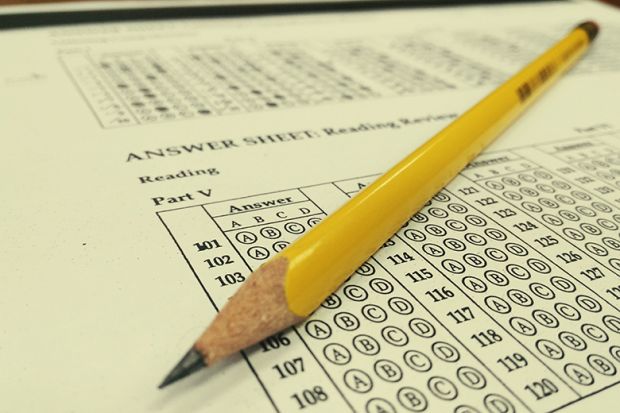Employers across Vietnam – domestic and multinational – often hit educators with a now-familiar litany of complaints. Graduates from even top universities lack critical thinking skills and imagination. And it can take more than a year to upskill a new employee to minimal competence. The cram-and-exam framework used by Vietnam’s primary and secondary schools – culminating in the high-stakes national university entrance test – has got to go.
Vietnam needs young professionals capable of working autonomously and solving difficult problems, and the school system remains hamstrung in supplying graduates, or university entrants, who fit the bill.
The exam has proved resilient, however, despite the recent switch to a single, arguably easier test. And the primary and secondary education system finds itself trapped by an exam that can determine the course of a young person’s life. At a recent informal chat with education industry acquaintances, a university entrance counsellor told me that a few of Ho Chi Minh City’s high schools for “gifted” young people had experimented with special projects and critical thinking exercises for top students. The result? Some became distracted from their cram sessions and failed the national exam. After that, cramming rose to the top the agenda again.
Universities, instead, must lead in remediating Vietnamese youth devastated by years of intellectual neglect. A commitment to robust, authentic assessment is where universities should begin developing students’ critical thinking and problem-solving skills. Can universities fully undo several years of rote, regurgitative learning? Probably not, but challenging students with authentic exercises that force them to apply learning in different contexts is a good start.
Authentic assessment is the idea that students should be required to do more than fill in bubbles on multiple-choice exams. Accounting students should prepare budgets, emerging engineers should build things, and entrepreneurship majors should pitch product ideas; these constitute authentic assessments that mirror activities that graduates might take part in once they enter the workforce.
RMIT University Vietnam, the country’s lone international branch campus, already mandates authentic assessments, and provides support to academics reworking invigilated exams and non-contextualised problem sets into realistic activities. Students, thus far, have found the new assessment style more engaging and, crucially, valuable post-graduation. RMIT Vietnam, however, is one university serving a sliver of Vietnam’s burgeoning undergraduate population. Local university engagement is needed if Vietnam wants enough capable graduates to satisfy the increasing demand for skilled labour.
At local universities, chalk-and-talk lessons followed by a high-pressure invigilated exam remain the norm. I taught an intensive first-year journalism course aimed at preparing students to work in English-speaking press outfits in Vietnam and abroad at the prestigious University of Social Sciences and Humanities, Ho Chi Minh City, which is part of Vietnam National University. The students were top scorers on the national exam (journalism has the university’s most stringent entrance requirements).
I developed a set of realistic interview assessments that students would record. But my students – who were indeed very bright, and generally very engaged – were completely unprepared to handle non-exam assessments. They had difficulty understanding the concepts of time management, conceptualising their own project and producing it on a deadline similar to a newsroom’s.
Also, many students, despite my syllabus stating that this was the assessment, assumed that the interview assignments were only practice activities, or busywork, and that the exam – there wasn’t one – would be the “real” grade. The journalism faculty also misunderstood the assessments and wanted me to use assignments that conformed to the department’s style. An administrator, at one point, even asked me for paper copies of my exams (in a speaking course), and was somewhat confused when I explained that they were videos.
The students, despite the difficulty and early confusion, responded well and reported increased engagement and several lessons learned via their mistakes. I worry, however, that the skills gained in my course atrophied in the following years – which is key, institutions need an authentic assessment strategy and, ideally, courses that build off each other using progressively more difficult contexts for these assignments. Programme-level learning outcomes that align to course and assessment outcomes can aid instructors in developing appropriate tasks, and making sure that each course contributes to students’ competencies.
My experience is a lone data point, but a telling one. Teaching critical thinking skills, problem-solving and work-readiness to the graduates of a test-centric education system presents Vietnamese universities with an extremely difficult task. Universities, however, can begin by developing authentic assessments, and the needed scaffolds, aimed at building students up over time through authentic activities, opportunities to safely make mistakes, and experience of grappling with the sort of uncertainty found in real-world projects.
Matthew D. Edward is an instructional design consultant and corporate trainer in Ho Chi Minh City.
POSTSCRIPT:
Print headline: To develop the graduates it needs, Vietnam must ditch the cram-and-exam framework
Register to continue
Why register?
- Registration is free and only takes a moment
- Once registered, you can read 3 articles a month
- Sign up for our newsletter
Subscribe
Or subscribe for unlimited access to:
- Unlimited access to news, views, insights & reviews
- Digital editions
- Digital access to THE’s university and college rankings analysis
Already registered or a current subscriber?




